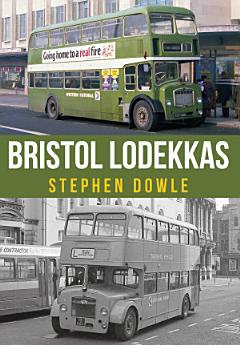关于此电子书
The Bristol Lodekka derived from a prototype of 1949. It offered the solution to a problem familiar to almost every bus operator: low railway bridges. An ingenious re-design of the transmission in which the propeller shaft was offset to the side and drove a drop-centre, double-reduction rear axle eliminated the conventional step up from the platform to the lower saloon, allowing a flat floor and reducing the overall height of a double-decker by a foot. The production vehicle, known as the LD-type, began to appear from 1953. All Lodekkas were bodied by Eastern Coach Works of Lowestoft, who embraced the post-war fashion for enclosing the engine in a rounded ‘cowl’. The result was rather inelegant, but subsequent refinements of the design and the relaxation of the Construction and Use regulations to permit buses 30 feet long, made the final form of the Lodekka – the FLF-type – a handsome and imposing vehicle. By the period covered here, the LD was down to a handful of survivors south of the border, but considerable numbers still ran in the fleet of the Eastern Scottish company. Later variants were still to be found in large numbers, but production had ceased in 1968 and even the last examples were approaching the ends of their lives. The author, who was for twenty years a busman, developed a considerable partiality for the Lodekka and took pains to build up a collection of photographs which depict the type at a time when it was still, just, a familiar sight the length and breadth of Britain.
作者简介
Bristol-born Stephen Dowle is a keen photographer and historian who now resides in Suffolk.
为此电子书评分
欢迎向我们提供反馈意见。
如何阅读
智能手机和平板电脑
笔记本电脑和台式机
您可以使用计算机的网络浏览器聆听您在 Google Play 购买的有声读物。
电子阅读器和其他设备
如果要在 Kobo 电子阅读器等电子墨水屏设备上阅读,您需要下载一个文件,并将其传输到相应设备上。若要将文件传输到受支持的电子阅读器上,请按帮助中心内的详细说明操作。






